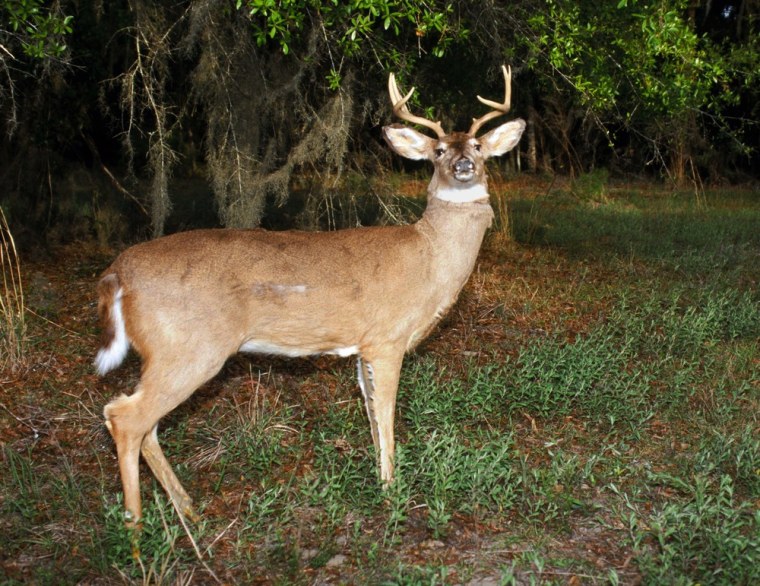Nighttime deer poachers beware — that shadowy creature on the side of the road may just be remote-controlled.
State wildlife officials across the country have for several decades been rolling out roadside robot decoys to nab unscrupulous hunters, and the effort has paid off with hundreds of citations.
A robotic deer decoy used in Georgia had to be replaced in 2006 after being shot more than 1,000 times.
"It's a time of year when some Utahns can't resist the sight of a big buck on the side of the road — even if shooting hours are over for the day," said Amy Canning, a spokeswoman for the Utah Division of Wildlife Resources.
Utah's five DWR regions now each have their own robot decoys, which are deployed in various spots along roadways where deer often gather or where poachers have been a problem in the past.
Hunting is not allowed at night in Utah, starting a half hour after sunset until a half hour before sunrise, but authorities say the sight of a big deer on the side of a road can just be too tempting for some.
Once a plan is in place, authorities put the mechanical deer near a road where it can be seen by passing cars. Then they hide nearby and keep watch, waiting for someone to take the bait, occasionally using the remote control to move the decoy's head and tail "to make it look as realistic as possible," said Utah DWR Sgt. Matt Briggs.
"We try to mimic some of the movement that takes place in the field," he said.
Hunters will generally use headlights to illuminate the deer, then take their shot. It doesn't matter if it's a bow and arrow or a rifle — if it's at night, it's illegal without special permission, Briggs said.
The shooters in Utah are issued a class B misdemeanor citation, punishable by up to six months in jail and up to a $1,000 fine. Authorities also seize their weapons.
Briggs said he's seen it all, from bow hunters shooting multiple arrows at the inanimate robot deer, amazed that it's not going down, to shooters with rifles repeatedly firing shots at the mechanical beast.
"I've seen an individual shoot it with a 30-06 (rifle) and couldn't figure out why it didn't go down after he hit it five or six times," Briggs said. "It can be really entertaining."
Elsewhere, poachers are catching on, and have become wary of shooting from the road not only for fear of arrest, but of the embarrassment that comes along with it, said Lt. Bill Bruce of the Indiana Department of Natural Resources. His state's decoy was effective for about 10 years, but wasn't deployed last year after it became less useful.
"If somebody gets caught shooting the deer from the road, it ruins their reputation as a hunter," Bruce said. "Their name goes up on the wall of shame among local hunters."
Florida officers have also used a robotic deer in all six wildlife regions, said state Fish and Wildlife Conservation Commission spokeswoman Katie Purcell.
"It's been successful at catching poachers," Purcell said. "It's a tool that officers can take to where the violation is actually happening."
